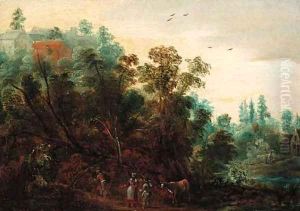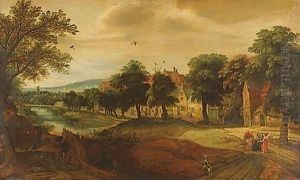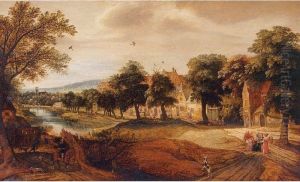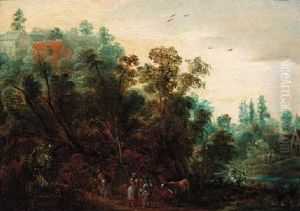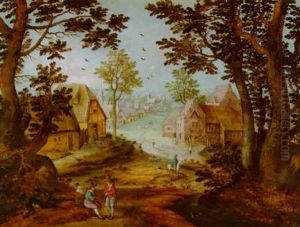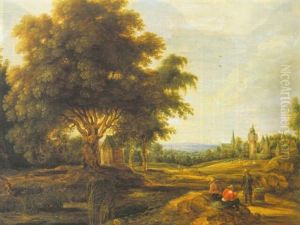Jacques Backereel Paintings
Jacques Backereel, a Flemish painter, was born around 1571, possibly in Antwerp, a city that was a major center for the arts in the 16th and 17th centuries. Little is known about his early life, including his exact date of birth, family background, and initial artistic training. However, it is believed that he was part of the illustrious Backereel family, which included several artists who were active in Antwerp during this period. This familial connection suggests that Jacques may have received his initial artistic education within a family workshop, a common practice at the time.
Jacques Backereel's career is not well-documented, but he is known to have been active in Antwerp during the late 16th and early 17th centuries. He became a master in the Guild of Saint Luke, the local painters' guild, in 1591, indicating that he had achieved a certain level of recognition and skill by this time. His work is primarily associated with the Flemish Baroque tradition, which was characterized by dramatic expressions, vivid details, and a deep sense of movement. The Baroque style in Flanders was deeply influenced by the Counter-Reformation, which sought to communicate religious themes with emotional intensity and directness.
Despite the scarcity of surviving works definitively attributed to Jacques Backereel, he is credited with landscape paintings that exhibit a keen observation of nature and a meticulous approach to detail. His landscapes often included religious or mythological figures, integrating human presence within the natural world in a manner that was typical of the Baroque period. This integration of figures within the landscape not only demonstrates his technical skill but also reflects the period's interest in depicting narratives within natural settings.
Jacques Backereel's artistic contributions, though not as widely recognized as those of his contemporaries like Peter Paul Rubens or Anthony van Dyck, provide valuable insights into the diversity and richness of Flemish Baroque painting. His work contributes to our understanding of the period's artistic landscape, offering perspectives on how artists engaged with and interpreted the natural world. Jacques Backereel's death is believed to have occurred around 1657, marking the end of a career that, despite its relative obscurity, played a part in the vibrant cultural and artistic milieu of 17th-century Antwerp.
